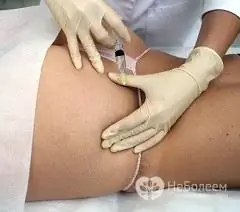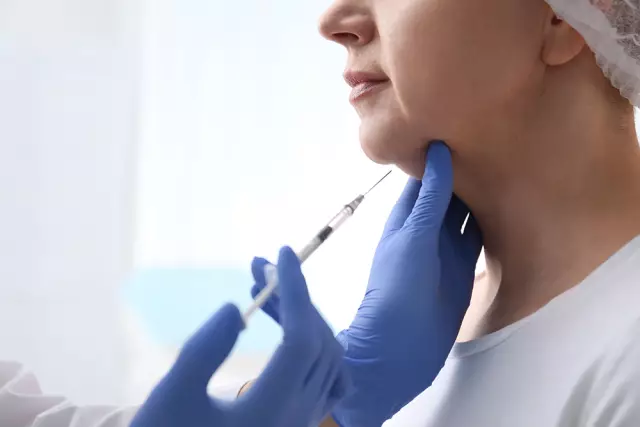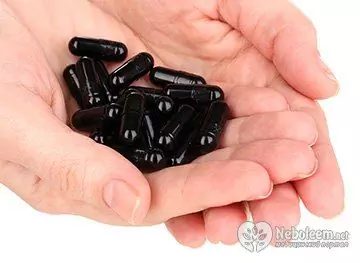- Author Rachel Wainwright [email protected].
- Public 2023-12-15 07:39.
- Last modified 2025-11-02 20:14.
Lipolytics
Instructions for use:
- 1. Magic enzymes: for weight loss
- 2. Drugs history of use
- 3.reviews and application features

A beautiful, slim figure devoid of excess body fat is not only a tribute to fashion, but also a sign of excellent health. Being constantly in accelerated rhythms of life, we do not always have time to take care of the correct diet, we resort to the services of fast foods and use semi-finished products for food. As a result, obesity is recognized by WHO as a worldwide epidemic. Diabetes mellitus, strokes, heart attacks - this is an incomplete list of often fatal diseases that are caused by overweight.
Of course, losing weight is not easy and time-consuming work. Only by defeating yourself and your habits can you get a bonus from fate in the form of beauty and health. At the same time, the opponents of this position have developed a counterargument in recent years. So, more and more often you can hear about wonderful drugs - lipolytics, which can easily get rid of excess body fat. It is necessary to inject the lipolytic several times directly into the area of the body with excess fat using a special thinnest needle, as they immediately dissolve without a trace.
Magic enzymes: lipolytics for weight loss
The natural soy enzyme phosphatidylcholine (designated PPC), much more familiar to all of us under the name lecithin, is precisely the lipolytic drug used in the injection lipolysis technique. In the process of human life, PPC is produced by the liver and participates in lipid metabolism, performing the function of breaking down fats. In addition, the enzyme normalizes blood circulation by removing cholesterol from the body and the remains of damaged cell membranes during stress.
Considering that the lipolytic phosphatidylcholine is able to dissolve only already destroyed fat cells, for injection lipolysis it is used in combination with another substance - deoxycholate, which actually destroys the adipocyte (fat cell).
Thus, PPC gets the opportunity to transform the available fats into an emulsion, which in turn is utilized by the body during phagocytosis.
Lipolytic drugs: history of use
Back in the eighties of the twentieth century, lipolytic lecithin in the form of injections began to be actively used to treat patients with small cholesterol plaques on the eyelids. In the aesthetic industry, it has been used to correct localized fat deposits in the navel, cheeks, chin and sides.
Today, some experts believe that lipolytics help in the fight against cellulite, especially when it comes to advanced stages accompanied by subcutaneous tubercles, although this will require the complex use of lymphatic drainage and mesotherapeutic procedures.
Lipolytics: reviews and application features

Often, the use of lipolytics is identified with mesotherapy. In fact, the techniques are somewhat similar to each other, but have fundamental differences. So during mesotherapy ("meso" is translated as "between"), the active substance is injected exactly between the skin layers to a depth of 6 mm. The actual active substance is a so-called cocktail consisting of various enzymes, vitamins and amino acids. This technique is widely used not only for the purpose of losing weight, but also in complex skin rejuvenation.
Lipolytics for weight loss are injected into the subcutaneous fat layer to a depth of 12 mm. Given that such an intervention is more significant, it should not be carried out in a beauty salon, but in a licensed medical clinic. Lipolytics should be administered by a surgeon, cosmetologist or dermatocosmetologist, that is, a specialist doctor with higher medical education and permission to carry out injection lipolysis.
Before prescribing a course of lipolytics, the doctor conducts a detailed survey, since these drugs have a number of contraindications for use. Failure to follow the technique of lipolytic administration can lead to the occurrence of an abscess or even necrosis (necrosis) of tissues at the injection site.
According to numerous reviews, after the end of the course of therapy, which usually consists of 6-10 procedures, lipolytics are able to reduce the volume of adipose tissue by 2-6 cm. Obviously, for a more radical reduction in parameters, one should resort to other methods, for example, liposuction.
Taking into account various individual factors, the interval of time that must elapse between sessions of injectable lipolysis within one course is from two to three weeks. Thus, the course itself lasts about three months.
The introduction of lipolytics, according to some patients, is accompanied by certain painful sensations, and swelling and redness may appear at the injection sites. The result of application becomes noticeable after about a month and a half.
In the professional environment at the moment there is no consensus on the benefits and dangers of lipolytics. For example, in France, injection lipolysis is prohibited due to the high risk of complications.
Information about the drug is generalized, provided for informational purposes only and does not replace the official instructions. Self-medication is hazardous to health!






